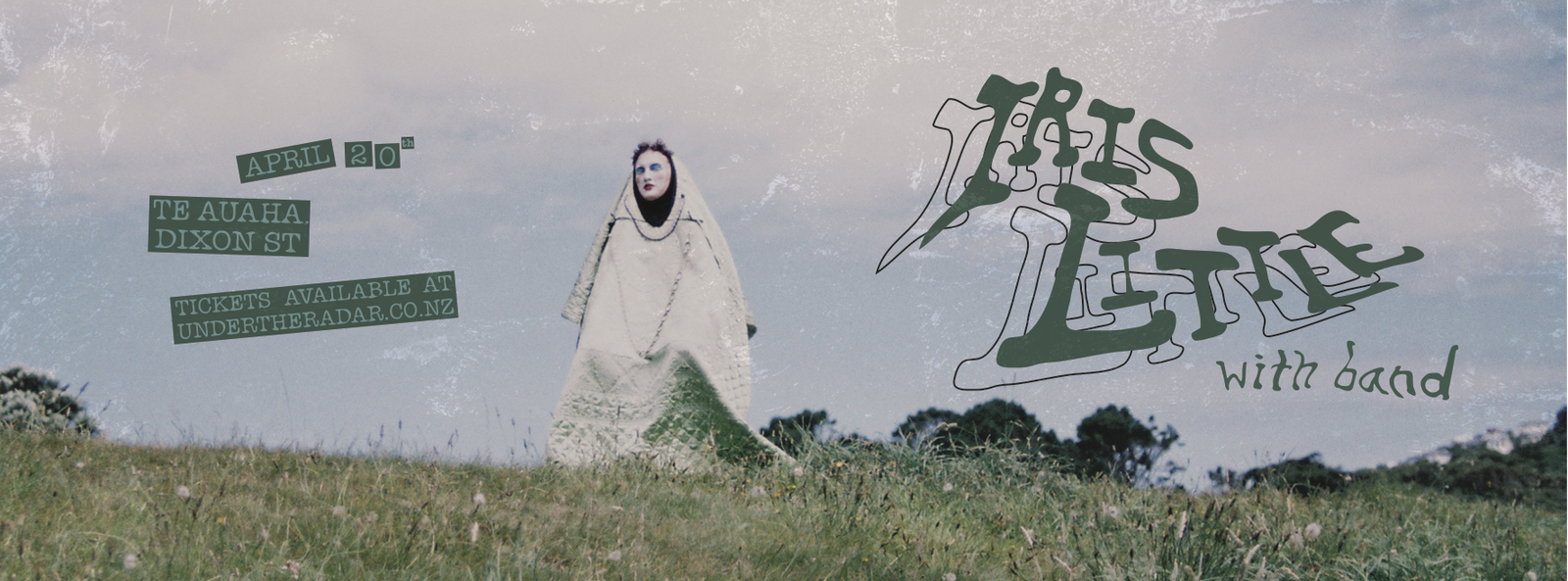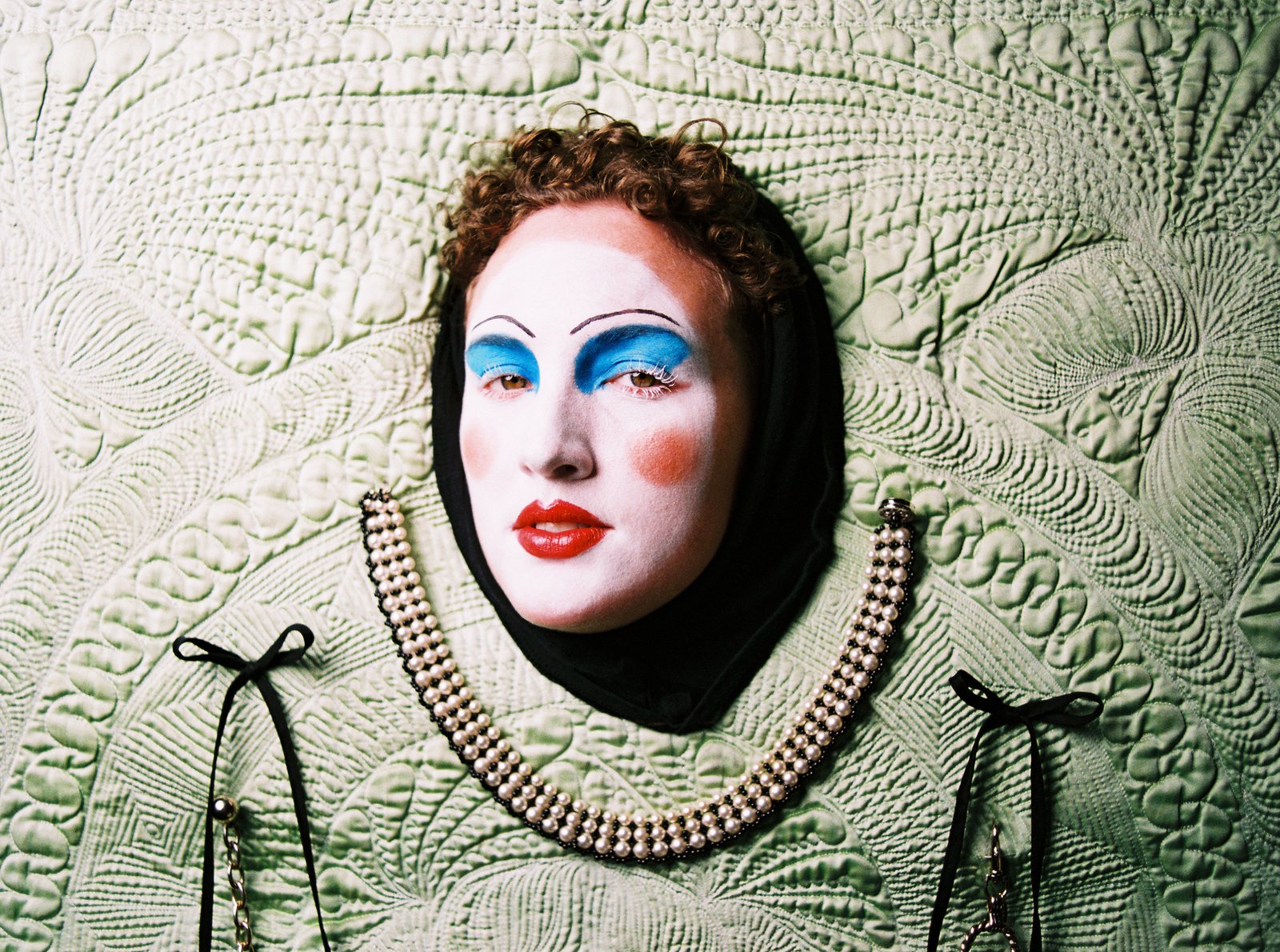Weaving folk traditions inspired by the natural world and nuances of identity, Te Whanganui-a-Tara based artist Iris Little crafts compositions that feel both contemporary and deeply resonant.
We spoke with Iris about their upcoming work and their creative process based on a concept first, poem second approach. Talking of the process that aides the musical flow and story-centric experience of the work, as well as the inspirations behind their sound and the people involved in the project.

Can you talk us through your composition process, and what this typically looks like?
The process for this body of work in particular has been quite different from most other writing I’ve done. My original intention was to create music that I could perform in a deeply embodied way- something I could translate and hold onto almost regardless of circumstance. Throughout my career of performing I feel I have learnt deeply the responsibility you hold when given the privilege of an audience. Music is a spiritual practise and I intended with this body of work to ensure the safety of those I shared space with, as well as myself. This led me towards much vaster, abstract conceptual spaces and a heavy reliance upon lyric and idea as a strong conceptual anchor-point. I ended up settling on the numerical values 1 through 5 to work with as the foundational anchor-points and leant into the inherent essence and/or properties each number has to offer. It’s been a ‘concept first-poem second-let the music follow’ type of process. I feel as though this has helped the words dictate the musical flow and create a very storycentric experience which emerges from the body quite naturally.
Was this at all a collaborative piece of work?
The writing of this music has been a very personal journey and one I have needed to take alone but the nature of recording and performing music is always a collaborative one- if you intend to share it, that is!
I worked with producer, multi-instrumentalist, all round extraordinaire Ben Lemi to record and further develop the works and that was essential to translating the tunes from a solo, guitar/piano and vocals world into the full band instrumentation.
Can you tell us a bit about the musicians in the band and why you chose them for the project?
This upcoming show features some of my favourite Wellington musicians. On keys is Leonardo Coghini- Leonardo is a prolific world creator and alien translator. He channels some particular magic that is instantly recognisable as not from this planet. It is an honour to have him! Hikurangi Schaverien-Kaa will be on drums. Hikurangi plays with an unmatched sensitivity. He understands story like a vocalist might- uplifting and moving with the words whilst deep in the groove. Such a special player! Then we have Zane Hawkins on fretless bass and moog. Zane has the grounded energy of an anchor! I have never played a gig with Zane where I didn’t feel looked after. Finally we have James Goldsmith pulling it all together from front of house. James is a very special sound engineer who has super powered ears and a super powered heart. I can’t wait for us all to express together!!
What do you hope people take away or experience from the performance?
I hope people leave the show a little lighter! It’s such a special privilege to be able to hold space and create in a theatre! There’s a different kind of rule set for how you learn to engage with story in these spaces- a different capacity for catharsis. I hope people feel the merging of the gig and theatre worlds as we sort of straddle between them both and try to make something that uses the best of each of them.
Who and where do your influences lie? Has your formal training at the NZSM influenced or helped to form your sound and music at all?
As far as formal training is concerned I think there’s no way I couldn’t be influenced by my training at NZSM- it was 3 years of dedicated practise time. I definitely developed my ears during this period and was exposed to jazz harmony and its theoretical concepts. But in saying that I do think there was also a lot of unlearning I had to do after Jazz School to get to where I am now and the comfortability I have with my own ideas. I don’t often write theory first- usually from instinct and feel. Validating these processes was not reflected by the theory first thinking you see in institutionalised learning. Joni Mitchell talks in many interviews about her experience with this disconnect and of her battles with playing with jazz musicians vs rock musicians- rock musicians not fully hearing the intricacies of her music, and jazz musicians complaining about her chords ‘not making sense’. It’s an interesting perspective to come at music making from and the balance is hard to get right but it makes for pretty colourful expressions I think.
Should we be keeping our eyes peeled on any new music to appear post-gig?
I plan to release the first single from the album later in the year with the full album looking to be released early 2025. All proceeds from the show will be going into these releases.
Set to be a magical performance, join Iris for an evening of nature and storytelling on
Saturday 20 April, Te Auaha, 8pm
Tickets available at undertheradar.co.nz
